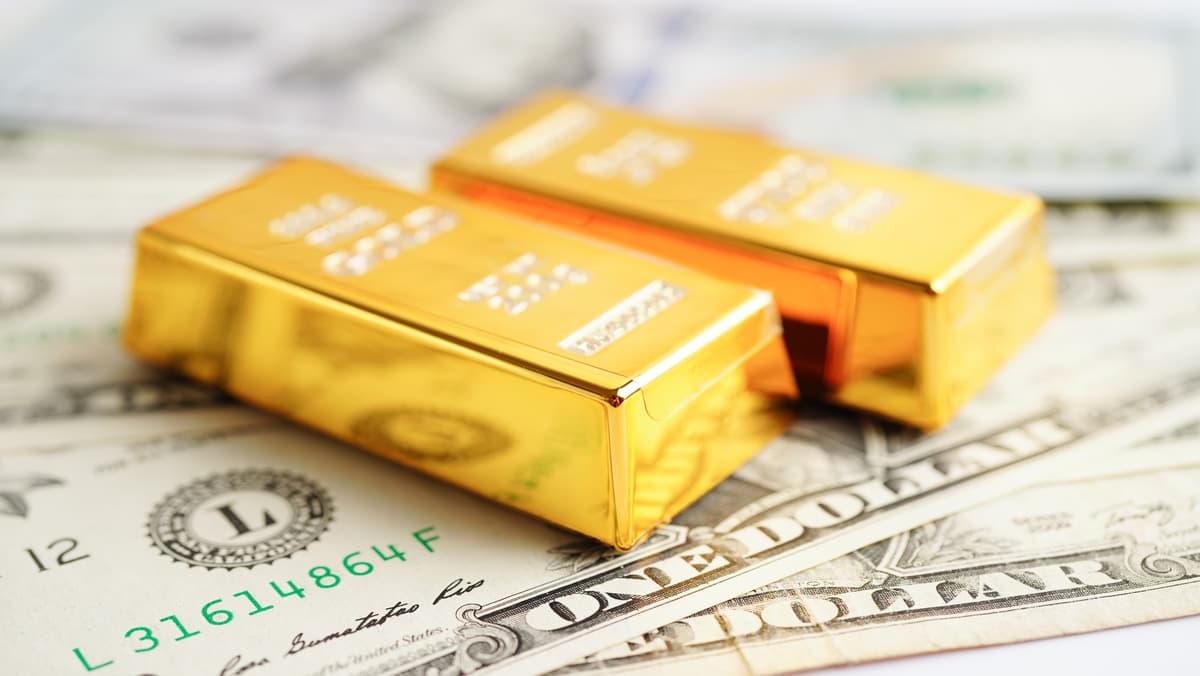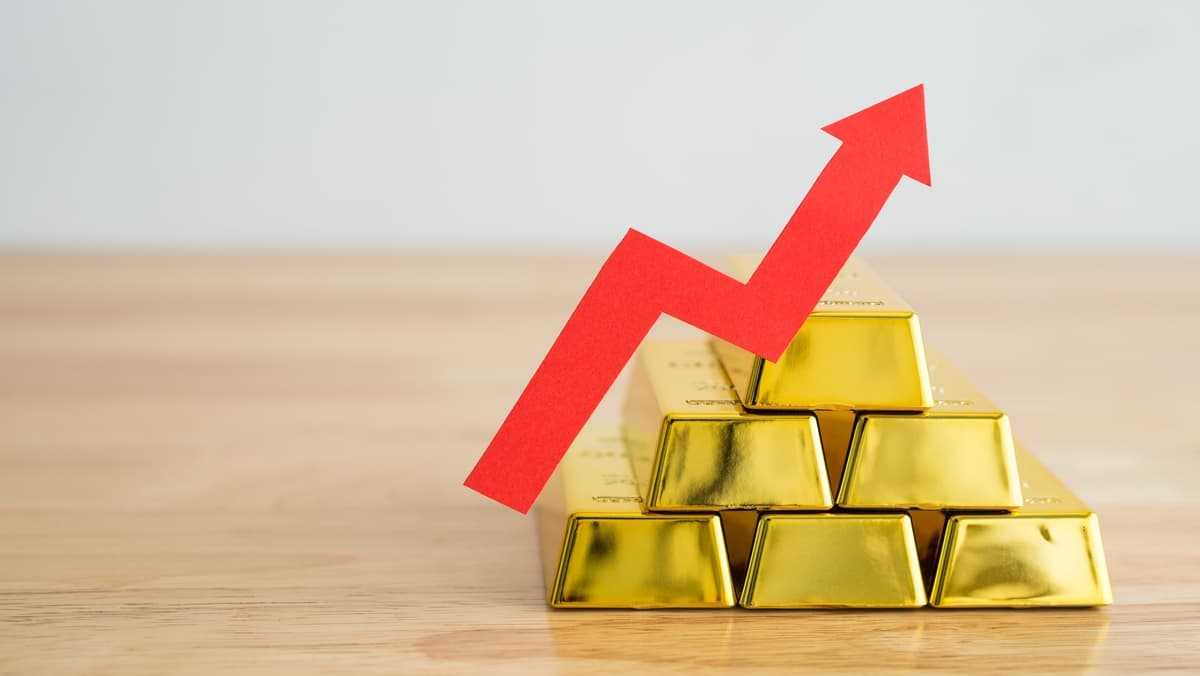
Tuesday Nov 11 2025 07:45

16 min

What are the different types of gold: Gold has long been cherished across cultures and civilizations for its enduring value and timeless allure.
Commodity trading basics: As a tangible asset, it holds a unique place in the financial landscape, often seen as a reliable store of wealth during uncertain times. This guide delves into the various forms of gold available, explores how to craft a thoughtful investment approach using these forms, and addresses common questions surrounding gold investments. Whether you’re just starting with limited resources or managing a substantial portfolio, this article aims to provide clarity on navigating the golden path.
As a tangible asset, it holds a unique place in the financial landscape, often seen as a reliable store of wealth during uncertain times. This guide delves into the various forms of gold available, explores how to craft a thoughtful investment approach using these forms, and addresses common questions surrounding gold investments. Whether you’re just starting with limited resources or managing a substantial portfolio, this article aims to provide clarity on navigating the golden path.
Gold exists in several distinct forms, each with its own characteristics, uses, and suitability for building a diversified portfolio. Understanding these forms is the first step toward making informed decisions about incorporating gold into your financial strategy.

Physical Gold: Bars and Coins
Physical gold is perhaps the most traditional form, encompassing bullion bars and coins. Bars are typically produced in various sizes, ranging from small units to larger blocks, often preferred by those looking to hold substantial amounts. Coins, on the other hand, are minted by governments or private entities and often carry historical or cultural significance. They are widely recognized and easy to trade, making them a popular choice for individuals seeking tangible holdings.
Gold Jewelry: Aesthetic and Practical
Gold jewelry combines beauty with intrinsic worth. While primarily worn as adornment, it also serves as a portable store of value, especially in cultures where it plays a central role in traditions and ceremonies. However, the value of jewelry can be influenced by craftsmanship and design elements, which may not always align directly with the pure metal content.
Gold ETFs and Funds: Paper Gold
For those who prefer not to handle physical gold, exchange-traded funds (ETFs) and mutual funds offer a way to gain exposure. These financial instruments are tied to the value of gold without the need for storage or security concerns. They are traded on stock exchanges, providing a convenient entry point for those accustomed to market-based dealings.

Gold Mining Stocks: Indirect Exposure
Another avenue is through shares in companies involved in gold extraction and production. This form offers a way to tap into the industry’s dynamics, though it comes with additional considerations tied to company performance, operational challenges, and market conditions. It’s a less direct way to connect with gold’s value but can be part of a broader strategy.
Gold Futures and Options: Derivative Instruments
For those comfortable with more complex financial tools, futures and options provide a way to speculate on gold’s future movements. These contracts are agreements to buy or sell gold at a predetermined point in time, often used by seasoned participants in the market. They require a deeper understanding of market mechanisms and carry unique risks.
Digital Gold: A Modern Approach
In the era of technology, digital gold has emerged as a contemporary option. It allows individuals to own fractional amounts of gold stored in secure vaults, accessible through online platforms or mobile applications. This form caters to those seeking convenience and flexibility without the burden of physical possession.
Crafting a plan to include gold in your financial portfolio requires aligning your goals, resources, and risk tolerance with the various forms available. Below, we outline tailored approaches for individuals with differing levels of capital and experience, ensuring a balanced perspective on incorporating this asset.
For Traders with a Small Amount of Capital
Starting with limited resources doesn’t mean you can’t engage with gold as part of your financial journey. The key is to focus on accessible and manageable options while building a foundation for the future.

For Experienced Traders with a Large Amount of Capital
For those with substantial resources and a background in financial markets, gold can play a more dynamic role in a diversified portfolio. The focus here shifts toward leveraging different forms for broader exposure and strategic positioning.
Navigating the world of gold can raise many questions, especially for those new to this asset class. Below, we address some common inquiries to provide clarity and guidance on incorporating gold into your financial plans.

What Factors Should I Consider Before Investing in Gold?
When thinking about gold, reflect on your financial goals, risk tolerance, and time horizon. Consider whether you’re looking to preserve wealth, diversify a portfolio, or engage in active trading. Additionally, think about storage and security if opting for physical forms, or the credibility of platforms and funds for non-physical options. Understanding the broader economic environment, such as inflation trends or currency fluctuations, can also inform your timing and approach.
How Do I Ensure the Authenticity of Physical Gold?
Verifying the authenticity of physical gold is crucial to avoid counterfeit products. Purchase from reputable dealers, mints, or authorized sellers who provide certificates of purity or assay reports. Look for hallmarks or stamps indicating the gold’s fineness, and consider having items tested by a trusted third party if doubts arise. Building relationships with reliable sources over time can also help ensure the quality of your acquisitions.
What Are the Storage Options for Physical Gold?
Storing physical gold requires balancing security with accessibility. Home storage, such as in a personal safe, offers convenience but may pose risks if not adequately protected. Bank safety deposit boxes provide a more secure environment, though access may be limited to banking hours. Specialized vaults or depositories offer professional-grade security, often with insurance options, making them suitable for larger holdings. Weigh the costs and benefits of each method based on your specific needs.

Can I Mix Different Forms of Gold in My Portfolio?
Absolutely, combining various forms of gold can be a strategic way to diversify exposure. For instance, holding physical gold alongside ETFs or digital gold allows you to benefit from tangibility while maintaining flexibility. Mixing forms can also help manage risks associated with any single type, such as storage concerns for physical gold or market volatility for paper-based options. Tailor the mix to align with your resources and objectives.
How Do Economic Conditions Affect Gold’s Value?
Gold’s value often responds to broader economic factors like inflation, interest rates, and currency strength. During periods of economic uncertainty or rising inflation, gold may be viewed as a store of value, potentially increasing demand. Conversely, when economies are stable and interest rates rise, alternative assets might draw attention away from gold. Keeping an eye on these conditions can help you anticipate shifts and adjust your strategy accordingly.
Is Gold Suitable for Short-Term Trading?
Gold can be used for short-term trading, particularly through instruments like futures, options, or ETFs, which allow for quick transactions based on market movements. However, its value tends to be influenced by long-term trends rather than rapid fluctuations, making it less ideal for frequent buying and selling compared to other assets. If considering short-term engagement, ensure you understand market dynamics and are prepared for potential volatility.
How Do I Transition from Small to Larger Gold Holdings?
Scaling up your gold holdings involves a gradual approach. Start by consistently adding to your portfolio through small, regular acquisitions, whether physical or digital. As your resources grow, explore larger physical pieces or diversify into other forms like mining stocks or market-based instruments. Reassess your storage and security arrangements to accommodate increased holdings, and stay informed about market conditions to time your expansions thoughtfully.
What Are the Risks Associated with Gold Investments?
Like any financial endeavor, gold comes with its own set of challenges. Physical gold carries risks of theft or loss if not stored securely, while paper-based forms like ETFs or futures are subject to market volatility and counterparty risks. Mining stocks can be affected by company-specific issues or operational setbacks. Additionally, gold’s value can fluctuate based on economic factors, so it’s important to remain mindful of these elements when building your portfolio.
How Can I Stay Informed About Gold Markets?
Keeping up-to-date with gold markets involves following trusted financial news sources, industry reports, and economic indicators that influence value, such as inflation or geopolitical events. Joining online communities or forums dedicated to gold can provide insights from other enthusiasts. Subscribing to newsletters from reputable organizations or attending webinars can also deepen your understanding of trends and developments in this space.
Should I Allocate All My Resources to Gold?
Focusing entirely on gold is generally not advisable, as diversification across different asset classes helps manage risk. Gold should complement other holdings, such as equities, bonds, or real estate, to create a balanced portfolio. The proportion of gold in your strategy depends on your goals and risk tolerance, but it’s wise to maintain a mix that aligns with your broader financial vision.
Gold, in its many forms, offers a versatile way to enhance a financial portfolio, whether you’re starting with modest resources or managing a substantial one. From tangible bars and coins to digital platforms and market instruments, each type presents unique benefits and considerations.
By thoughtfully crafting a plan that matches your circumstances and staying informed about market dynamics, you can navigate the world of gold with confidence. Remember to balance your approach, reassess periodically, and remain adaptable to changing conditions. Gold’s enduring presence in human history underscores its lasting relevance, making it a compelling component of a well-rounded financial strategy.

Ready to dive into gold CFD trading? Discover Markets.com for an intuitive platform, attractive spreads, and a diverse array of assets. Seize your trading journey today! Join us now and gain access to the essential tools and resources that will elevate your success in the dynamic world of CFDs. Start your trading adventure now!
Risk Warning: this article represents only the author’s views and is for reference only. It does not constitute investment advice or financial guidance, nor does it represent the stance of the Markets.com platform.When considering shares, indices, forex (foreign exchange) and commodities for trading and price predictions, remember that trading CFDs involves a significant degree of risk and could result in capital loss.Past performance is not indicative of any future results. This information is provided for informative purposes only and should not be construed to be investment advice. Trading cryptocurrency CFDs and spread bets is restricted for all UK retail clients.